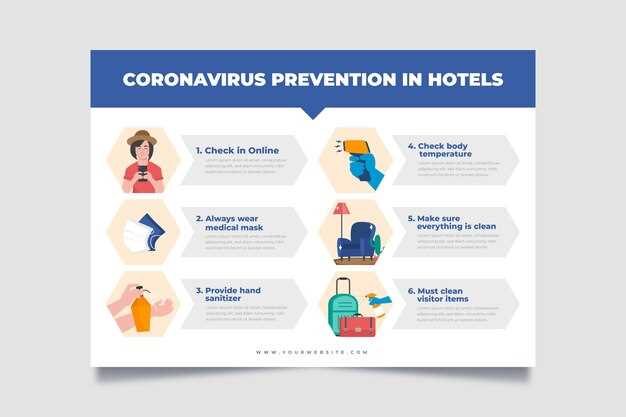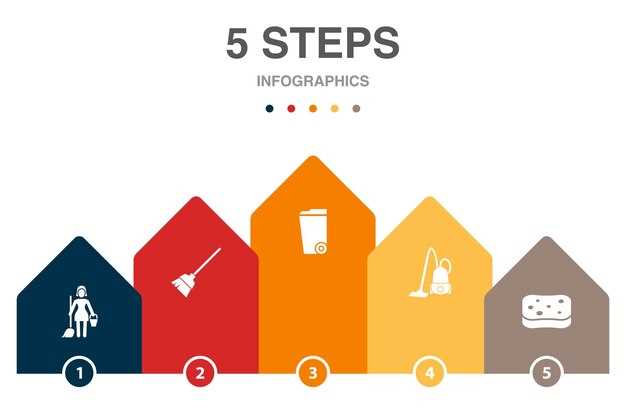Focus your efforts on implementing a meticulously structured Clean-in-Place (CIP) cycle that maximizes sanitation efficiency. By systematically following a well-defined 5 step checklist, you can ensure optimal operation safety and regulatory compliance in food and beverage production. In this article, we’ll guide you through each critical phase of the CIP process, providing practical tips and insights to enhance your sanitation protocols.
Step 1: Initial Rinse – Kick off the cycle with a thorough initial rinse using warm water. Crucially, this step aims to remove the bulk of loose debris and soil from the equipment, setting the stage for effective cleaning. Target a temperature range between 95°F and 120°F to optimize the removal of fats and proteins, ensuring the equipment is primed for the next stages of the process.
Step 2: Detergent Application – Utilize an alkaline detergent solution to break down stubborn residues that remain after the rinse. The effectiveness of this phase relies on achieving the correct balance between the concentration of the detergent and the contact time. A recommended concentration of 1-2% at 140°F can significantly enhance the cleaning power, penetrating deep into residues and ensuring thorough sanitation.
Step 3: Intermediate Rinse – Follow up with an intermediate rinse to flush out the detergent and residues from the system. This crucial step reduces the risk of detergent carryover, which can compromise the integrity of subsequent phases. Employ clean, potable water at room temperature or slightly warmer to ensure residues are adequately removed without chemical interference.
Step 4: Sanitization – With the surfaces clean, apply a sanitizing solution tailored to your facility’s specific needs. Whether you opt for acid-based or chlorine-based solutions, ensure that the contact time and concentration meet industry standards to effectively eliminate bacteria and other microorganisms. Aim for a solution concentration of around 200 ppm and a contact time of at least 10 minutes for maximum sanitization efficacy.
Step 5: Final Rinse – Complete the cycle with a final rinse using potable water to remove any traces of sanitizing agents. This essential step ensures that no chemical residues remain on the equipment surfaces, maintaining product safety and quality. Monitor water conductivity or use visual inspections to confirm the thoroughness of this rinse before returning the equipment to production.
By adhering to this precise checklist, your CIP cycle becomes not only a routine procedure but a cornerstone of operational excellence. Download our comprehensive PDF guide at the end of this article to support the implementation of these steps, ensuring your facility maintains the highest standards of hygiene and efficiency.
5 Step Checklist for CIP

Step 1: Pre-rinse the Equipment
Initiate a thorough pre-rinse of the equipment using water to remove loose debris and residues. Ensure the water temperature aligns with the material compatibility to avoid potential damages. This step sets the stage for more effective cleaning.
Step 2: Apply Detergent
Circulate an appropriate detergent solution throughout the system. Select a detergent based on the specific soils and residues identified within your equipment. Maintain the recommended concentration and temperature to ensure optimal soil removal.
Step 3: Rinse Thoroughly
Perform a secondary rinse to eliminate any detergent residues. Use clean water, ideally at a slightly elevated temperature, to enhance rinsing efficacy. Confirm the rinse water flows clear before proceeding.
Step 4: Circulate a Sanitizing Agent
Introduce an approved sanitizing agent to effectively reduce microbial presence. Ensure the agent remains in contact with all surfaces for the manufacturer-recommended duration. This step is crucial for maintaining hygienic standards.
Step 5: Final Rinse and Inspection
Conclude with a final rinse using purified water to clear any sanitizing agent remnants. Follow up with a comprehensive inspection to verify the absence of residues and proper equipment assembly. Document the process for quality assurance and compliance.
Pre-Clean Preparation: Ensuring System Readiness

Verify that all equipment is properly assembled and aligned, ensuring seals are intact to prevent leaks. Misalignment or missing components can compromise the cleaning process.
Check that all valves and gauges are functioning correctly. Faulty instruments can lead to inaccurate readings, affecting the cleaning sequence and timing.
Inspect cleaning nozzles and ensure they are free from blockage. Blocked nozzles can hinder effective coverage, leaving residues that should be removed.
Confirm that the cleaning solution is prepared to the correct concentration and temperature specified by the cleaning protocol. Inaccurate preparation can reduce the effectiveness of the cleaning cycle.
Document all pre-clean checks in a log to maintain records of system readiness. This documentation supports ongoing process improvement and compliance with regulations.
| Task | Status |
|---|---|
| Equipment Assembly Check | Completed |
| Valves and Gauges Inspection | Completed |
| Nozzle Blockage Assessment | Completed |
| Cleaning Solution Preparation | Completed |
| Documentation Log Update | Completed |
First Rinse: Removing Loose Residues
Begin your Clean-in-Place cycle by initiating the first rinse with warm water, ideally between 35-40°C. This temperature effectively loosens and carries away surface particles and residues such as sugar crystals, fat fragments, or protein remnants. Ensure the equipment is completely saturated, allowing the water to flow through all valves, nozzles, and surfaces for about 5-10 minutes. This duration helps maximize waste removal efficiency.
Monitor the rinse water’s clarity using conductivity sensors or visual inspection, aiming for a clear flow to signal readiness for the next cleaning stage. Ineffective rinsing can leave residues that compromise subsequent cleaning steps. Regularly check and adjust the water pressure to provide a consistent rinse across all components, enhancing residue dislodgement.
Consider using automated systems to regulate rinse parameters, ensuring repeatability and reducing manual intervention. This approach optimizes resource use and improves overall sanitation outcomes. Conclude this stage by draining all water effectively, confirming that no puddles or un-rinsed areas remain.
Chemical Cleaning: Using Detergents and Solutions
Choose the right detergent based on the type of residue and the material of the equipment. Alkaline cleaners are well-suited for organic residue, including fats and proteins, while acid-based solutions effectively remove mineral deposits.
- Alkaline Cleaners: Use concentrations typically ranging between 0.5% to 2% at temperatures of 50–70°C, which helps in breaking down organic soils.
- Acid Cleaners: Employ these for scale removal at 0.5% to 1.5% concentration with temperatures of 30–60°C for effective dissolution of mineral deposits.
Ensure consistent agitation during the cleaning cycle. This movement enhances the effectiveness by constantly mixing the solution and preventing re-deposition of loosened residues.
- Time Management: Allow the detergent to circulate for 30–60 minutes, depending on the extent of contamination.
- Agitation Techniques: Utilize spray balls or jets to ensure even distribution and penetration of the cleaning solution.
Incorporate rinse cycles both before and after chemical application. Use warm water pre-rinse to remove loose soil and post-rinse to eliminate any detergent traces, preventing material damage or contamination.
- Pre-Rinse: Conduct with water at approximately 40–50°C until effluent is clear.
- Post-Rinse: Execute with water at the same temperature range for at least 10–15 minutes after cleaning cycle completion.
Inspect equipment post-rinse for any remaining residue or detergent presence. Utilize visual checks or simple pH testing to ensure neutrality.
- Visual Inspection: Check for cloudiness or residue streaks indicating incomplete cleaning.
- pH Testing: Use pH strips on rinse water outflow to confirm it’s neutral (pH 6.5-7.5).
Document each cleaning cycle’s parameters including time, detergent concentration, temperature, and inspection results. This documentation aids in compliance with safety and quality protocols and provides a basis for troubleshooting if necessary.
Intermediate Rinse: Clearing Chemical Agents
Ensure a thorough removal of cleaning agents by executing an effective intermediate rinse. Purposefully use ambient or slightly warm water, aiming for complete coverage of the surfaces involved. Proper water pressure is crucial; it aids in efficiently dislodging residual chemicals from every nook and cranny of equipment and piping systems.
Monitor water pH levels consistently to affirm that no chemical traces linger, as they may skew readings. A neutral pH indicates successful clearing. Consider assessing rinse water volume; inadequate amounts can lead to insufficient cleaning, while excessive use may unnecessarily increase costs.
Regularly inspect the system for any signs of chemical residue after rinsing. This is best done visually or by swabbing and testing in critical areas. Make adjustments to rinse duration or method as needed based on these observations. A well-implemented intermediate rinse lays the foundation for successful subsequent stages of the Clean-in-Place cycle.
Final Sanitization: Ensuring Microbial Safety
Implement effective sanitizers that actively reduce microbial load. Choose chemical agents like hydrogen peroxide or peracetic acid, known for their strong antimicrobial properties, and check compatibility with your equipment. Establish a routine to monitor sanitizer concentration, ensuring it remains within recommended levels for consistently safe outcomes.
Optimize contact time by adhering to guidelines provided by sanitizer manufacturers. Proper duration directly impacts the eradication of harmful microorganisms, so always monitor and adjust the exposure time as necessary. For enhanced performance, try adjusting the temperature within a range specified by experts.
Maintain equipment surfaces impeccably. Conduct frequent visual inspections to detect residue buildups that could shelter bacteria. Implement additional rinsing if any residues persist, thus preventing microbiological contamination effectively.
Encourage the use of validated testing methods such as ATP testing or microbiological swabs to verify microbial load reduction. Regularly evaluate the efficacy of your sanitization process using these tests, ensuring your operation consistently meets safety standards.
Consider creating a documented schedule for final sanitization steps, outlining personnel responsibilities, sanitizing agents used, and verification methods. Engaging staff in this organized workflow promotes accountability and maintains high sanitation standards.
| Sanitization Agent | Contact Time (Minutes) | Temperature Range (°C) |
|---|---|---|
| Hydrogen Peroxide | 10 | 20-40 |
| Peracetic Acid | 15 | 15-35 |
By systematically applying these practices, you maintain an environment where microbial threats are minimized, enhancing both safety and quality of your operations.
CIP System Guide for Food Dairy Applications

Optimize your dairy processing with a meticulously configured Clean-in-Place (CIP) system. Begin by selecting CIP components compatible with dairy, ensuring your system efficiently handles liquids at various temperatures. Integrate automated control systems for precise monitoring and adjustments during cleaning cycles, reducing human error and maximizing cleanliness.
Tailor your CIP cycles for dairy-specific needs. Utilize detergents and sanitizers explicitly designed to break down milk residues and protein deposits. Carefully calibrate the concentration, temperature, and flow rates. This combination ensures thorough cleaning without damaging sensitive dairy equipment.
Implement a verification process post-cleaning. This includes both visual inspections and swab tests for bacteria to confirm sanitation standards are met. Regularly review and document these checks to maintain high safety levels and regulatory compliance.
Conduct routine maintenance of CIP components such as pumps, valves, and spray balls to prevent breakdowns and ensure the system’s longevity. Scheduled upkeep can significantly reduce downtime and maintain optimal cleaning efficiency.
Continuously train staff on the nuances of your CIP system tailored for dairy applications. Educated operators not only enhance system utilization but also adapt more effectively to any necessary procedural adjustments, ensuring the safety and quality of your dairy products.
System Components: Key Parts and Their Functions
To ensure smooth operations during a Clean-in-Place (CIP) cycle, focus on understanding the key components of the system. Proper knowledge of each part and its function will enhance operational efficiency and maintain cleanliness.
Pumps: Select pumps that maintain appropriate flow rates for different cleaning stages. They contribute to effective circulation of cleaning solutions, ensuring coverage in every part of the system.
Valves: Use automated valves to regulate the flow and direction of cleaning agents. Precision in valve operation is necessary to avoid cross-contamination and ensure complete system drainability after the cycle.
Heat Exchangers: Maintain consistent temperatures with efficient heat exchangers. Appropriate heating is essential for activating chemical reactions, aiding in soil removal.
Tanks: Choose tanks that store sufficient volumes of cleaning solutions tailored to your equipment’s needs. They ensure optimal concentrations and cycles for effective cleaning.
Sensors and Controllers: Sensors provide real-time monitoring of temperature, pressure, and chemical concentration. Controllers automate adjustments, keeping parameters within desired limits during the CIP cycle.
Each component plays a significant role in ensuring thorough cleaning and sanitization. Regular maintenance and calibration are necessary to achieve consistent results, minimize downtime, and extend the life of your equipment.
Customizing CIP Cycles for Dairy Processes
Tailor your Clean-in-Place (CIP) cycles by initially assessing the specific dairy products you process. Milk, yogurt, and cheese entail distinct cleaning needs due to their unique compositions.
Analyze Residue Types: Identify the types of residues present, such as fats and proteins. Different residues require unique cleaning agents and times. For instance, heavy fat deposits demand more alkaline cleaners.
Adjust Temperature Settings: Set appropriate temperature ranges to enhance cleaning efficacy. Dairy processes often benefit from temperatures between 60°C to 85°C to efficiently break down fats and proteins.
Select Appropriate Detergents: Choose detergents specific to dairy residues. Use a combination of acidic and alkaline detergents, ensuring compatibility with your equipment material to prevent corrosion.
Optimize Flow Rates: Adjust flow rates to ensure thorough cleaning without damaging equipment. Balanced flow rates maximize contact between cleaning agents and residues.
Schedule Cleaning Frequency: Regularly clean after every production cycle to avoid contamination. The frequency might vary depending on production volume and product shelf-life requirements.
Documentation and ongoing monitoring of CIP cycles ensure they meet hygiene standards and operational efficiency. Adjust protocols periodically based on results and technological advancements to keep up with industry requirements.
Monitoring and Adjusting CIP Parameters
Regularly monitor key parameters such as temperature, flow rate, and chemical concentration during the CIP process to maintain optimal cleaning performance. Instruments that measure and log these parameters in real-time can provide valuable data for analysis and adjustment.
- Temperature Control: Set temperature thresholds based on the specific requirements of the soils and equipment. Utilize thermostatic controls and real-time temperature monitoring systems to ensure consistent temperatures are maintained, as deviations can greatly affect cleaning efficacy.
- Flow Rate Optimization: Adjust flow rates according to the geometry and size of the equipment being cleaned. Flow meters can help maintain and verify the flow rate, ensuring thorough coverage and contact with cleaning surfaces.
- Chemical Concentration: Use conductivity meters or automated chemical dosing systems to accurately manage concentration levels. Consistent chemical strength ensures effective removal of contaminants.
- Time Parameters: Define rinse and wash cycle times meticulously, considering the extent of soil and equipment specifics. Real-time monitoring can help adjust these dynamically to avoid under or over-cleaning.
- Cleaning Validation: Collect and evaluate data from each cycle. Use sensors and analytical tools to detect any residue or microorganisms post-cleaning, adjusting parameters as needed to achieve cleanliness standards.
By fine-tuning these parameters, facilities can achieve not only superior cleanliness but also reduced chemical and water usage, leading to cost savings and environmentally friendly operations.
Q&A:

Can you explain the concept of Clean-in-Place (CIP) and its importance?
Clean-in-Place (CIP) is a method used for cleaning the interior surfaces of pipes, vessels, process equipment, and associated fittings without disassembly. This process is critical for maintaining hygiene standards and ensuring that equipment remains free of contamination, which is especially significant in industries like food and beverage, pharmaceuticals, and cosmetics.
What are the common steps involved in a CIP cycle?
A typical CIP cycle includes five steps: pre-rinse, detergent wash, post-rinse, acid wash, and final rinse. Each step plays a crucial role in ensuring that all residues are effectively removed from the equipment. The pre-rinse removes loose debris, the detergent wash breaks down organic material, the post-rinse clears detergent residues, the acid wash removes mineral deposits, and the final rinse ensures all cleaning agents are thoroughly flushed out.
Why is a checklist necessary in a CIP process?
A checklist is essential for ensuring that all necessary steps are followed consistently and effectively during CIP processes. It helps operators maintain a standardized approach, reducing the risk of contamination and ensuring the equipment is cleaned to the required standard. A detailed checklist aids in troubleshooting and improves operational efficiency by minimizing errors and omissions.
What types of industries benefit most from using a CIP system?
Industries that process products sensitive to contamination benefit significantly from CIP systems. This includes the food and beverage industry, where cleanliness is key to product safety. Similarly, the pharmaceutical industry relies on CIP systems to maintain the sterility of its production environments. The dairy and brewing sectors also use CIP to ensure that their products meet health and safety standards.
Where can I find a downloadable PDF checklist for a CIP cycle?
A downloadable PDF checklist can often be found on the websites of companies providing CIP solutions or through industry organizations dedicated to facility maintenance and hygiene. These resources typically offer structured guides that can be tailored to specific equipment and operational needs.
What are the key steps involved in a Clean-in-Place (CIP) cycle, and why are they important?
The Clean-in-Place (CIP) cycle consists of five main steps: pre-rinse, detergent wash, post-rinse, acid wash, and sanitation. Each step plays a crucial role in ensuring equipment is thoroughly cleaned and sanitized. The pre-rinse removes loose debris and prepares the equipment for washing. The detergent wash uses specific cleaning agents to break down and dissolve deposits, fats, or proteins. The post-rinse removes any remaining detergents to prevent contamination. Acid wash is used to dissolve mineral deposits that may not be removed by detergent alone. Finally, the sanitation step ensures all microorganisms are eliminated, providing a safe environment for production. This cycle is vital for maintaining hygiene standards, prolonging equipment lifespan, and preventing product contamination.
How can I ensure my CIP cycle is efficient, and what common pitfalls should I be aware of?
To ensure your CIP cycle is efficient, it is essential to regularly monitor and adjust several factors, such as flow rate, temperature, and chemical concentrations. Adequate training for staff responsible for CIP operations is crucial, as this ensures they understand the significance of each step and can troubleshoot any issues that arise. It’s also beneficial to regularly review and validate CIP protocols, making adjustments as necessary based on the type of soil or product residue common in your process. Common pitfalls include failing to reach appropriate temperatures or contact times during the different steps, not maintaining the right chemical concentrations, and neglecting equipment maintenance, which can lead to incomplete cleaning and potential contamination. Regular audits, together with feedback from staff involved in the process, can help address these issues proactively.
